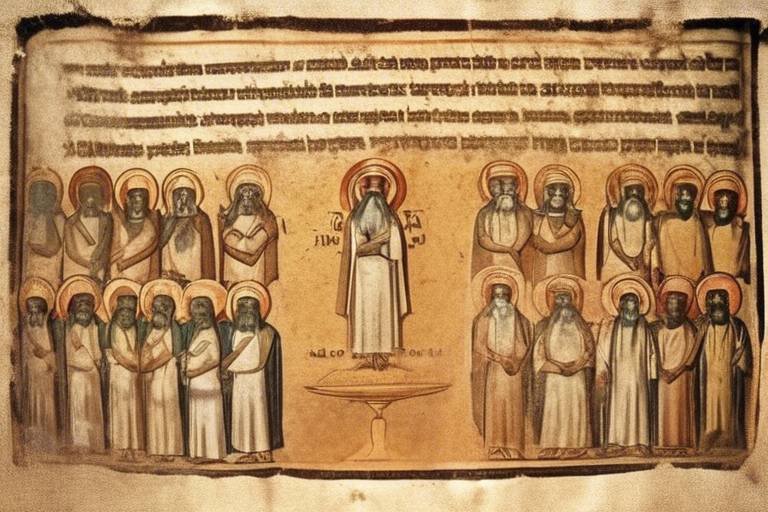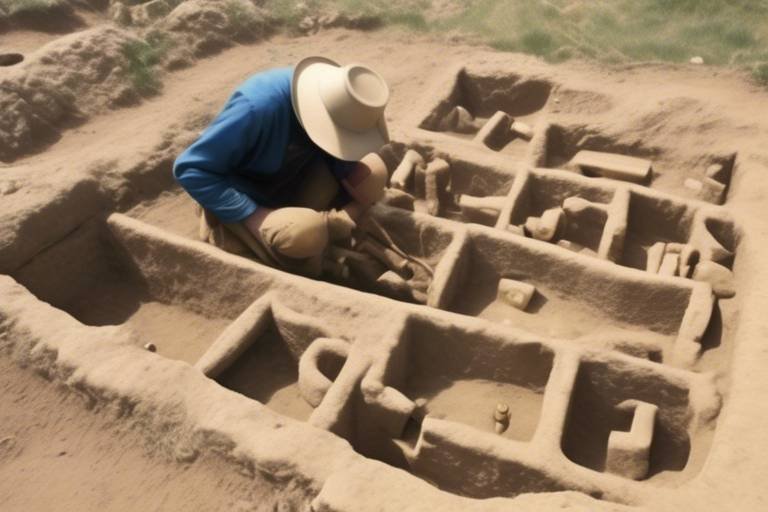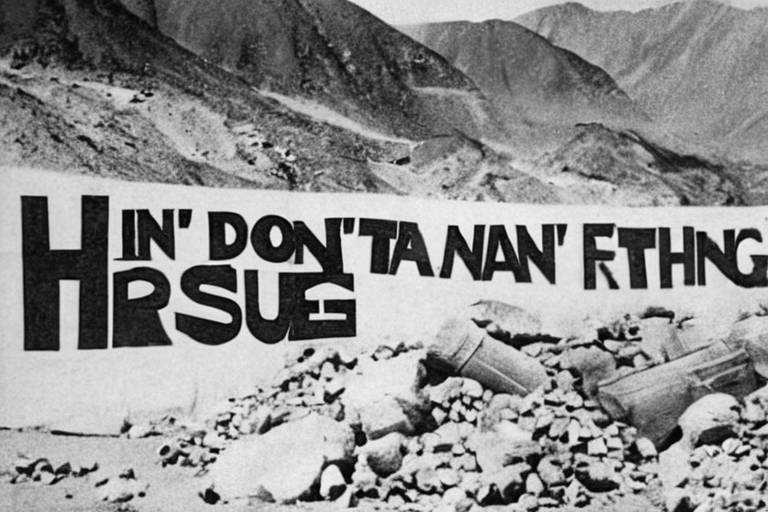How Ancient Faiths Addressed the Concept of the Divine
Throughout history, ancient civilizations and cultures have grappled with the profound concept of the divine in various ways, shaping their beliefs, rituals, and societal structures. The interpretation and interaction with the divine were central to the spiritual fabric of these societies, offering insights into their values, fears, and aspirations.
Ancient Egyptian beliefs were deeply intertwined with a pantheon of gods and goddesses who governed different aspects of life and the afterlife. The Egyptians engaged in elaborate rituals and ceremonies to honor and appease these divine entities, seeking their favor and protection in daily endeavors.
In Greek mythology, a rich tapestry of gods and goddesses populated Mount Olympus, embodying human emotions, virtues, and flaws on a grand scale. The interactions and conflicts among these deities mirrored the complexities of mortal existence, offering narratives that explained natural phenomena and moral dilemmas.
Hinduism, one of the world's oldest religions, presents a diverse array of deities and manifestations of the divine, reflecting the multifaceted nature of reality. From the all-encompassing concept of Brahman to the colorful pantheon of gods and goddesses, Hindu beliefs emphasize the interconnectedness of all life forms and the importance of devotion in spiritual practice.
Norse mythology, rooted in the cold landscapes of Scandinavia, featured powerful gods like Odin, Thor, and Freyja who embodied valor, strength, and wisdom. The Norse worldview was shaped by the cyclical nature of life, death, and rebirth, with divine beings influencing the fates of both gods and mortals.
Chinese traditional beliefs revolved around the veneration of ancestors, celestial deities like the Jade Emperor, and the harmonious balance of Yin and Yang. Taoist and Confucian philosophies also played significant roles in shaping Chinese religious practices, emphasizing harmony with nature and society.
Indigenous spiritual practices encompass a wide range of beliefs and rituals that honor the natural world, ancestral spirits, and the interconnectedness of all living beings. Indigenous cultures worldwide maintain a deep reverence for the earth and its inhabitants, viewing the divine as immanent in every aspect of existence.
Zoroastrianism, with its dualistic worldview of good and evil, posited a cosmic struggle between Ahura Mazda, the benevolent creator, and Angra Mainyu, the destructive force. This ancient faith underscored the importance of ethical choices and the eternal battle between light and darkness in the human experience.
By comparing and contrasting the diverse ways in which ancient faiths addressed the concept of the divine, we gain a deeper appreciation for the richness and complexity of human spirituality. Each belief system offers a unique perspective on the nature of the divine, reflecting the cultural values and existential concerns of its adherents.

Ancient Egyptian Beliefs
Exploring the ways in which various ancient religions and belief systems interpreted and interacted with the concept of the divine, shedding light on their unique perspectives and practices.
Ancient Egyptian beliefs were deeply rooted in the worship and reverence of gods and goddesses who played essential roles in their mythology, rituals, and daily life. The Egyptians saw the divine entities as powerful beings influencing every aspect of their existence. From Ra, the sun god, to Isis, the goddess of magic, each deity symbolized different aspects of life and nature.
The Egyptians believed in an afterlife where the soul would journey through the underworld, facing trials and judgment before reaching eternal paradise. This belief in the continuity of life beyond death shaped their funerary practices, including mummification and elaborate burial rituals to ensure a successful transition to the afterlife.
The intricate mythology of ancient Egypt intertwined with the daily lives of its people, influencing art, architecture, and societal norms. Temples dedicated to various gods served as centers of worship and cultural significance, where priests and priestesses conducted ceremonies to honor and communicate with the divine.
The pantheon of Egyptian deities reflected the complexities of human experiences and emotions, with each god or goddess embodying specific qualities and powers. The Egyptians sought divine favor through offerings, prayers, and rituals, believing that maintaining harmony with the gods was crucial for prosperity and protection.
- 1. How did ancient Egyptians view the afterlife?
- 2. What role did temples play in ancient Egyptian society?
- 3. Why were gods and goddesses important in Egyptian mythology?
- 4. How did rituals and offerings strengthen the bond between humans and the divine in ancient Egypt?
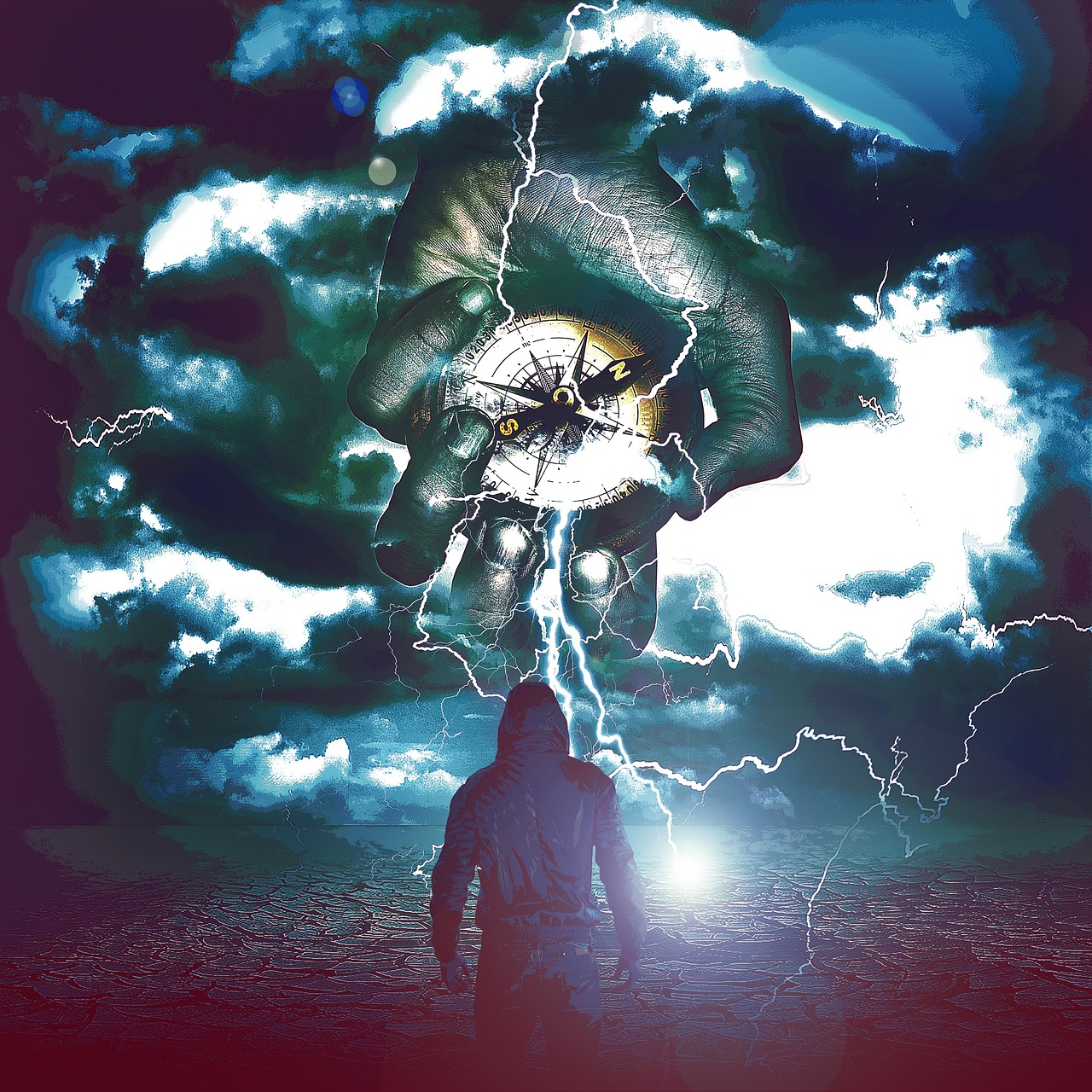
Greek Mythology and Deities
Greek mythology stands as a rich tapestry of stories, with gods and goddesses weaving through the lives of mortals, shaping the very fabric of ancient Greek society. At the heart of this intricate web of tales are the Olympian deities, a pantheon of powerful beings each with their own domains, personalities, and influence over the mortal realm. From the thunderous Zeus, ruler of the skies, to the wise Athena, goddess of wisdom and warfare, these divine figures embodied various aspects of human experience and nature itself.
One cannot delve into Greek mythology without encountering the dramatic relationships and intricate family dynamics among the gods. The love affairs, rivalries, and conflicts among deities such as the jealous Hera, the vengeful Poseidon, and the mischievous Hermes added layers of complexity to the divine realm, mirroring the complexities of human emotions and interactions.
Moreover, the Greek gods were not distant and aloof beings but rather actively involved in the lives of mortals, intervening in wars, offering guidance, and sometimes punishing hubris and arrogance. Their presence in everyday life was palpable, with rituals, festivals, and sacrifices dedicated to honoring and appeasing these powerful entities.
Each deity represented a facet of the human experience, embodying virtues, vices, and natural phenomena. For example, Artemis symbolized the untamed wilderness and the hunt, while Apollo personified music, poetry, and the sun. These multifaceted representations allowed the ancient Greeks to connect with the divine on a personal level, seeking guidance, protection, and blessings from the gods in various aspects of their lives.
Furthermore, the myths and legends surrounding Greek deities served not only as entertainment but also as moral lessons and explanations for the world's mysteries. Stories of love, betrayal, heroism, and tragedy intertwined with the exploits of gods and heroes, offering insights into the complexities of human nature and the capriciousness of fate.
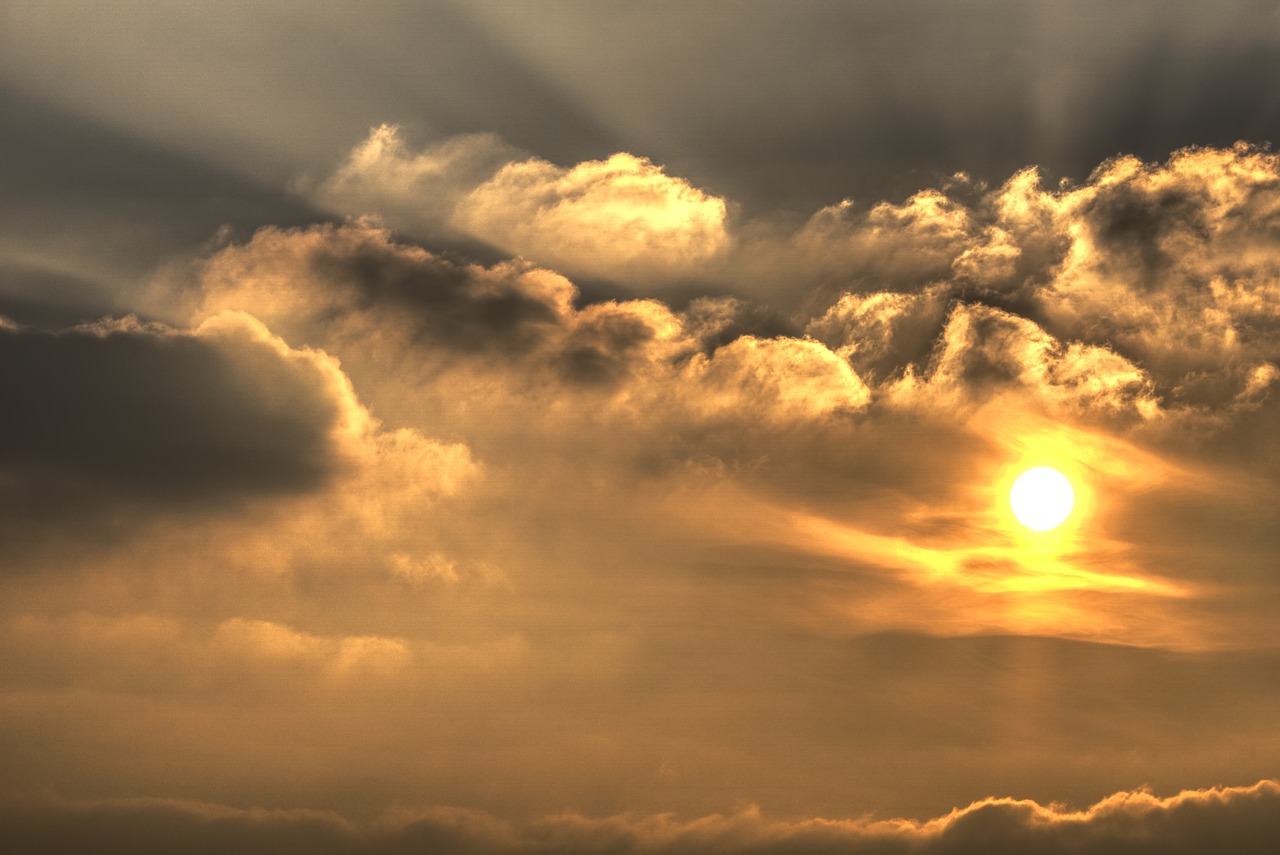
Hinduism's Concept of Divinity
Hinduism, one of the world's oldest religions, offers a rich and diverse understanding of divinity that encompasses a multitude of deities, rituals, and philosophical concepts. At the core of Hindu beliefs is the concept of Brahman, the ultimate reality that underlies the entire universe and transcends all individual gods and goddesses. Brahman is seen as the source and essence of everything, representing the unchanging, eternal nature of existence.
Within Hinduism, there is a vast pantheon of gods and goddesses, each representing different aspects of the divine and playing specific roles in the cosmic order. Deities such as Vishnu, Shiva, and Devi are revered for their powers and attributes, with devotees worshipping them through elaborate rituals, prayers, and offerings. These rituals are believed to establish a connection between the worshipper and the divine, fostering devotion and spiritual growth.
Rituals and ceremonies hold great significance in Hindu worship, serving as a means to honor the gods, seek their blessings, and express gratitude for their benevolence. From elaborate temple ceremonies to personal daily rituals performed at home, Hindu practices are deeply rooted in the belief that engaging with the divine through various acts of devotion can lead to spiritual enlightenment and fulfillment.
Moreover, the concept of divinity in Hinduism extends beyond the realm of gods and goddesses to include the idea of the Atman, the inner self or soul that is believed to be inherently divine. Central to Hindu philosophy is the notion that each individual carries a spark of the divine within them, connecting them to the universal consciousness and emphasizing the unity of all existence.
Overall, Hinduism's concept of divinity is characterized by its complexity, diversity, and profound spiritual insights, offering a comprehensive framework for understanding the nature of the divine and one's relationship to it.

Divine Figures in Norse Mythology
Exploring the ways in which various ancient religions and belief systems interpreted and interacted with the concept of the divine, shedding light on their unique perspectives and practices.
In Norse mythology, the pantheon of gods and goddesses played a central role in the lives of the ancient Norse people. Among these divine figures, Odin, the Allfather and god of wisdom, war, and poetry, stood as a prominent and complex deity. Known for his relentless pursuit of knowledge and his role as the leader of the Aesir gods, Odin symbolized both the pursuit of wisdom and the fierce warrior spirit.
Thor, the god of thunder and strength, wielded his mighty hammer Mjolnir to protect Asgard and Midgard from threats, embodying the power of thunderstorms and the protection of humanity. Freyja, the goddess of love, fertility, and beauty, represented both the joys of life and the mysteries of death, presiding over the realm of Folkvangr where half of fallen warriors were honored.
The Norse mythology also includes Loki, the trickster god, known for his cunning and mischief, often causing chaos and trouble for the gods and mortals alike. Despite his disruptive nature, Loki played a crucial role in many Norse myths, challenging the status quo and bringing about change and transformation.
These divine figures in Norse mythology were not only worshipped and revered but also served as symbols of the natural forces and human qualities that the ancient Norse people sought to understand and honor in their daily lives and rituals.
- Q: How did the ancient Norse people interact with their gods and goddesses?
- A: The ancient Norse people interacted with their gods and goddesses through rituals, offerings, prayers, and storytelling. They believed in a close relationship between humans and the divine, seeking guidance, protection, and blessings from the gods.
- Q: What role did mythology play in Norse society?
- A: Mythology played a crucial role in Norse society, shaping their understanding of the world, explaining natural phenomena, and providing moral lessons. Norse myths were passed down orally and through written texts, preserving the stories of gods, heroes, and cosmic events.
- Q: Were there any female deities in Norse mythology?
- A: Yes, Norse mythology featured several powerful female deities, including Freyja, the goddess of love and fertility, and Frigg, the queen of the gods and wife of Odin. These goddesses played significant roles in the Norse pantheon and were revered for their unique attributes and powers.

Chinese Traditional Beliefs
Chinese traditional beliefs have a rich tapestry of spiritual practices and concepts that have evolved over thousands of years. Central to these beliefs is the veneration of ancestors, considered as guardians and protectors of the living. Ancestor worship is deeply rooted in Chinese culture, with rituals and offerings made to honor and seek blessings from deceased family members.
Moreover, Chinese traditional beliefs encompass a pantheon of deities, with each deity governing specific aspects of life and nature. One prominent figure is the Jade Emperor, the supreme deity in Chinese folklore, responsible for overseeing the heavens and earth. Worship of the Jade Emperor is common in temples and households, with devotees seeking guidance and blessings for various endeavors.
Additionally, Taoist and Confucian philosophies have significantly influenced Chinese traditional beliefs. Taoism emphasizes harmony with nature and the balance of yin and yang forces, while Confucianism stresses filial piety and ethical conduct. These philosophies shape the moral and spiritual compass of individuals, guiding their interactions with the divine and fellow human beings.
Chinese traditional beliefs also incorporate the concept of feng shui, the practice of arranging physical spaces to harmonize with the natural environment and promote positive energy flow. Feng shui principles are applied in architecture, interior design, and urban planning to create auspicious and harmonious living environments.
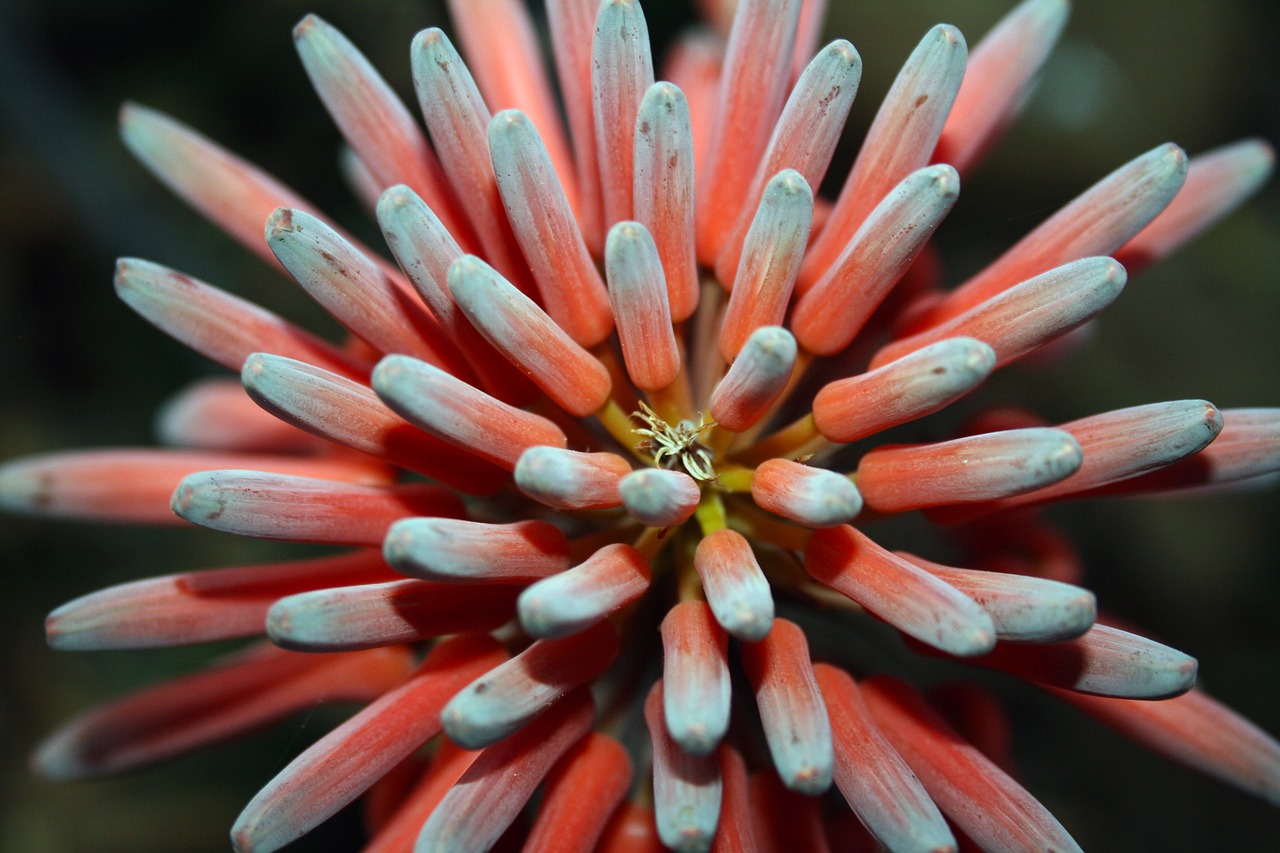
Indigenous Spiritual Practices
Indigenous spiritual practices encompass a rich tapestry of beliefs and rituals deeply rooted in connection to nature, ancestors, and spirits. These cultures worldwide have cultivated unique ways of communing with the divine, often blending reverence for the earth with a profound sense of the sacred. Unlike organized religions with structured dogmas, indigenous spiritualities often emphasize harmony with the natural world and the interconnectedness of all living beings.
Within indigenous communities, spiritual practices are integral to daily life, guiding interactions with the environment, fellow beings, and the unseen realms. Rituals and ceremonies play a vital role in honoring ancestral wisdom, seeking guidance from spirit guides, and maintaining balance within the community. These practices are not just religious observances but serve as a way of life, shaping cultural identity and fostering a deep sense of belonging.
Central to indigenous spiritual beliefs is the concept of reciprocity – the idea of giving back to the earth and honoring the spirits in exchange for their blessings and protection. This reciprocal relationship forms the foundation of many indigenous rituals, which often involve offerings, prayers, and ceremonies to express gratitude and seek guidance from the divine forces believed to govern the natural world.
Moreover, indigenous spiritual practices often incorporate elements of shamanism, where healers or shamans act as intermediaries between the physical and spiritual realms. These individuals are revered for their ability to communicate with spirits, perform healing ceremonies, and guide the community in times of need. Shamanic practices vary widely among indigenous cultures but share a common thread of seeking harmony and balance through spiritual connection.
Through storytelling, dance, music, and art, indigenous communities pass down their spiritual traditions from generation to generation, preserving ancient wisdom and cultural heritage. These practices are not static but evolve and adapt to changing circumstances, demonstrating the resilience and adaptability of indigenous belief systems in the face of external pressures and modernization.

Zoroastrianism and Dualism
Zoroastrianism, one of the world's oldest monotheistic religions, is deeply rooted in the concept of dualism, the belief in the eternal struggle between good and evil. At the heart of Zoroastrian beliefs are two powerful forces: Ahura Mazda, the god of light, truth, and goodness, and Angra Mainyu, the destructive spirit of darkness and falsehood. This dualistic worldview shapes every aspect of Zoroastrian theology and ethics, emphasizing the importance of choosing the path of righteousness over evil.
Ahura Mazda, the supreme deity in Zoroastrianism, represents all that is good and pure in the universe. Often depicted as the creator of the world and the source of divine wisdom, Ahura Mazda stands in opposition to Angra Mainyu, the embodiment of chaos and malevolence. The eternal conflict between these two forces is believed to manifest in the ongoing battle between truth and falsehood, order and chaos, light and darkness.
Central to Zoroastrian ethics is the concept of free will, where individuals are called upon to actively participate in the cosmic struggle between good and evil. Through righteous thoughts, words, and deeds, followers of Zoroastrianism seek to align themselves with the divine will of Ahura Mazda and contribute to the triumph of good over evil. This emphasis on personal responsibility and moral choice is a fundamental tenet of Zoroastrian teachings.
Rituals and prayers play a significant role in Zoroastrian worship, serving as a means of invoking divine protection, seeking guidance, and reaffirming one's commitment to upholding truth and righteousness. Fire, as a symbol of purity and divine presence, holds special significance in Zoroastrian ceremonies, representing the eternal light of Ahura Mazda and the power to purify the soul from impurities.
Throughout history, Zoroastrianism has influenced various aspects of Persian culture, including art, literature, and governance. The ethical principles of this ancient faith, centered on the battle between good and evil, continue to resonate with modern-day followers, emphasizing the enduring relevance of Zoroastrian teachings in shaping moral conduct and spiritual beliefs.
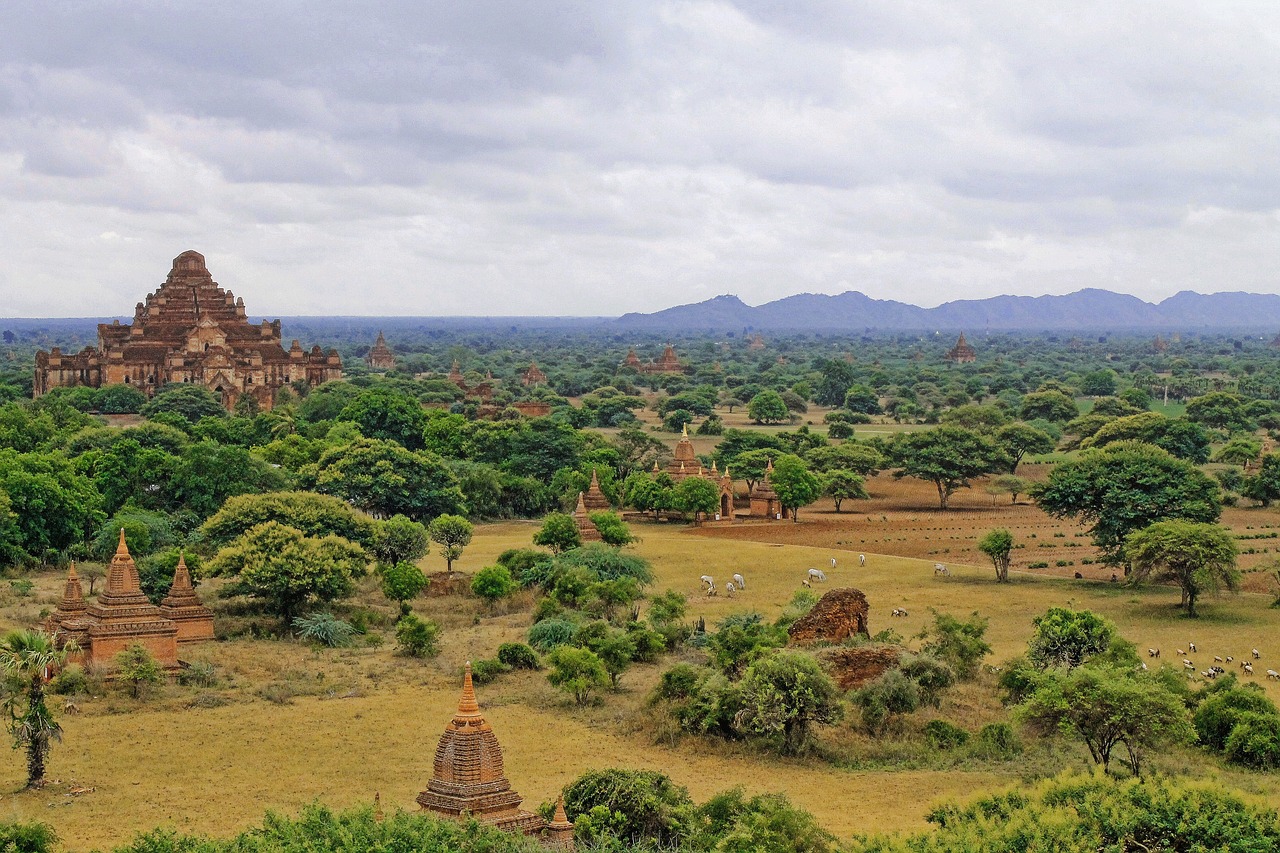
Comparative Analysis of Ancient Faiths
When conducting a comparative analysis of ancient faiths, it becomes evident that while each belief system had its unique interpretation and reverence for the divine, there are also striking similarities that transcend cultural boundaries. Across civilizations, the concept of the divine served as a cornerstone of spiritual practices, guiding human interactions with the supernatural realm and shaping societal norms.
Ancient Egyptian beliefs, for instance, revolved around a pantheon of gods and goddesses who embodied various aspects of nature and human experience. These deities were not only revered through elaborate rituals and offerings but also believed to directly influence the course of daily life, from agricultural prosperity to personal well-being.
In Greek mythology, the gods and goddesses held immense power and authority over different domains such as love, war, wisdom, and the natural elements. The intricate relationships and narratives surrounding these deities reflected the complexities of human emotions and struggles, offering a mirror through which ancient Greeks could contemplate their own existence.
On the other hand, Hinduism's concept of divinity encompasses a vast array of deities, each representing a unique facet of the supreme reality known as Brahman. Through rituals, prayers, and acts of devotion, followers seek to establish a personal connection with these divine beings, fostering spiritual growth and enlightenment.
Norse mythology presents a pantheon of gods and goddesses who embody the values and principles of the ancient Norse society. From the mighty Thor, god of thunder, to the wise Odin, ruler of Asgard, these divine figures played crucial roles in shaping the Norse worldview and guiding individuals through life's challenges.
Chinese traditional beliefs, deeply rooted in ancestor worship and reverence for celestial beings, emphasize harmony with the natural world and the importance of maintaining balance in all aspects of life. Taoist and Confucian philosophies further enriched these beliefs, offering guiding principles for ethical living and spiritual fulfillment.
Indigenous spiritual practices worldwide showcase a profound connection to nature, ancestors, and spirits, with rituals and ceremonies designed to honor and communicate with the divine forces that govern the universe. Through storytelling, dance, and communal gatherings, indigenous cultures preserve their rich spiritual heritage and pass down sacred knowledge through generations.
Zoroastrianism, with its dualistic worldview of cosmic struggle between the forces of good and evil personified by Ahura Mazda and Angra Mainyu, highlights the eternal battle for human souls and the importance of choosing righteousness in the face of adversity. This ancient faith underscores the moral responsibility of individuals in upholding the cosmic order.
By comparing and contrasting these diverse ancient faiths, we gain a deeper understanding of the intricate tapestry of human spirituality and the universal quest for meaning and connection with the divine. While each belief system offers a unique perspective on the nature of the divine, they collectively reflect the timeless pursuit of transcendence and enlightenment that unites humanity across time and space.
Frequently Asked Questions
- What is the significance of ancient Egyptian gods and goddesses?
Ancient Egyptian gods and goddesses played a crucial role in the religious beliefs and daily life of the ancient Egyptians. They were revered as powerful beings who controlled various aspects of the natural world and were believed to intervene in human affairs. The gods and goddesses were worshipped through elaborate rituals, temples, and offerings, reflecting the Egyptians' deep respect and awe for the divine entities.
- How did Greek mythology influence ancient Greek culture?
Greek mythology had a profound impact on ancient Greek culture, shaping their beliefs, values, and societal norms. The stories of gods and goddesses provided explanations for natural phenomena, human emotions, and the complexities of life. The myths also served as moral lessons and inspired art, literature, and philosophy, leaving a lasting legacy on Western civilization.
- What is the concept of Brahman in Hinduism?
In Hinduism, Brahman is the ultimate reality and the unchanging, infinite, and eternal essence of the universe. It is the source of all existence and encompasses everything in the cosmos. Brahman is beyond human comprehension and is described as the supreme, universal spirit that pervades all of creation. Understanding and realizing the nature of Brahman is a central goal of Hindu spiritual practice.
- Who were the key divine figures in Norse mythology?
Norse mythology featured a pantheon of gods and goddesses, with prominent figures like Odin, the Allfather and god of wisdom and war; Thor, the thunder god and protector of humanity; and Freyja, the goddess of love, fertility, and war. These divine beings played essential roles in Norse cosmology, mythology, and the lives of ancient Norse people.
- How did indigenous cultures connect with the divine?
Indigenous cultures worldwide connected with the divine through a deep reverence for nature, ancestors, and spirits. They viewed the natural world as sacred and believed in the interconnectedness of all living beings. Rituals, ceremonies, and storytelling were integral to their spiritual practices, fostering a profound sense of harmony and balance with the divine forces that governed their lives.

